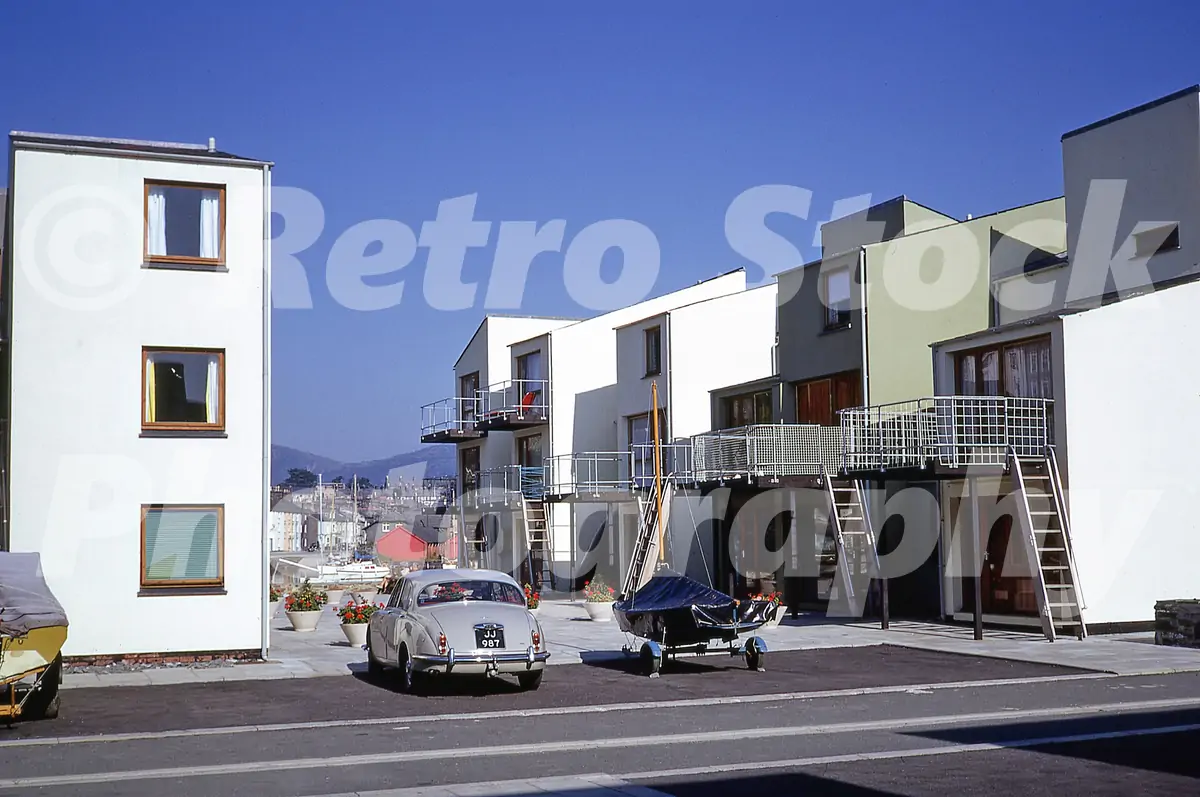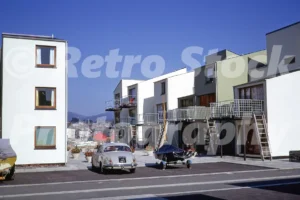In the late 1960s, the quiet port town of Porthmadog in North Wales became the setting for one of the most ambitious – and ultimately contentious – marina developments the region had ever seen. The South Snowdon Wharf project, launched as a joint venture between Graham Bourne, founder of Bourne Leisure, and Dennis Jeavons, aimed to transform a derelict dockside into a luxury residential and leisure complex for affluent city dwellers.
The initial phase of the development consisted of 132 modern flats and maisonettes, marketed towards the “busy Midlands industrialist” looking for a weekend retreat or investment property in the scenic surroundings of Snowdonia. Priced between £2,700 and £4,700, the units were competitively placed for the time and formed the first part of a much grander vision: a 900-unit marina development that would eventually include a large hotel, shops, restaurants, and bars – effectively creating a new leisure hub on the Dwyryd estuary.
However, the dream soon ran into trouble.
From the outset, there were tensions between Bourne and the local planning authorities. Chief among them was the requirement for slate roofs, a stipulation designed to preserve the traditional architectural character of the town and surrounding area. Bourne objected, arguing that the use of locally quarried slate would add £250 to the cost of each unit, a significant increase given the price point of the homes.
In what he later described as an “act of defiance”, Bourne installed Belgian asbestos roofing tiles on the first five units, flouting the planning guidelines. The move ignited controversy and triggered a full-scale dispute that escalated beyond local politics. Despite one local councillor admitting he “couldn’t tell the difference” between the materials, the matter went to a public inquiry, overseen by the Secretary of State for Wales.
In 1968, the verdict came down in favour of the council. The developers were ordered to finish the units with slate roofs, as originally stipulated. Though the first phase was completed according to the new guidelines, the outcome left a bitter taste.
Angered by what he viewed as “consistently obstructive decisions”, Bourne abandoned the wider scheme entirely. He cancelled plans for the second phase of development, including the marina and hotel complex. His departure left a permanent mark on the town’s waterfront – a reminder of what might have been.
Bourne’s frustration didn’t end with the development. He also resigned as chairman of Porthmadog Football Club, severing one of his main ties to the town, and instead took up the chairmanship of Oswestry FC, further underlining his disengagement from the area.
While the South Snowdon Wharf flats remain, offering a quiet residential enclave with scenic views, the bold vision of a bustling marina destination was lost. The episode stands as a telling example of the clash between modern commercial ambition and local heritage preservation—one in which tradition, ultimately, held the line.







Reviews
There are no reviews yet.